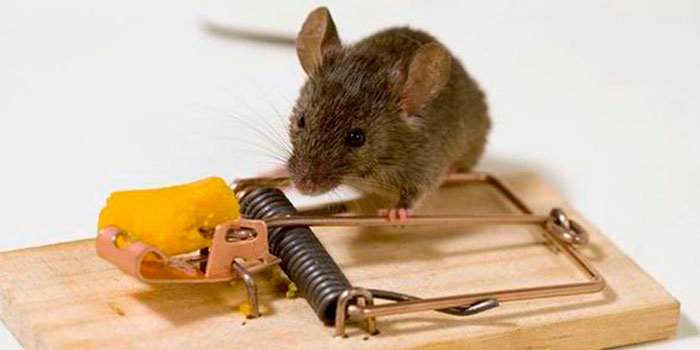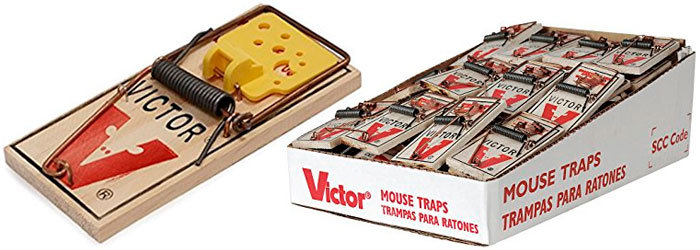
- LAST UPDATED: December 9, 2023
Do you have mice in your kitchen? Are you finding their droppings when you’re looking through your cabinets? Are there chew marks on your food in the pantry? If you have discovered these telltale signs of mice in your kitchen, then you know exactly how frustrating it is to have an unwanted vermin problem in your home.
To learn more about how to tell if you have a mouse infestation in your kitchen and the best ways to eradicate them, keep reading. Having mice in your kitchen doesn’t have to cramp your love of cooking, and with the advice, you’ll find in this article, any mouse issues that you may have will quickly become a thing of the past.
I Just Saw a Mouse in My Kitchen: What Should I Do?
Many times, the signs of a mouse infestation in your kitchen are subtle. You may find chew marks on a box of pasta, or there are droppings in your silverware drawer for you to encounter when you reach for a spatula. Sometimes mice will make their presence known by boldly scampering in front of you while you’re cooking dinner.
If you were minding your own business and suddenly a mouse darted in front of you, or even worse – you were reaching into the cabinet for something to eat and discovered that a mouse got to it before you did – you may be feeling repulsed, angry, and confused.
Fortunately, there are several steps you can take to stop an existing mouse infestation on the spot:
- First of all, don’t panic. This isn’t the end of the world, and having a mouse infestation in your kitchen doesn’t mean that you’re a dirty or bad person. It just means that your kitchen seemed like an easy target for the mouse and they took advantage of your oversight. You can fix this. Take deep breaths and move on to step two!
- Find out where the mice are getting in. Mice are crafty little creatures and it takes only 1/4 of an inch gap for them to find an entry. That’s the diameter of a #2 pencil! Mice have sloped collarbones and flexible ribs, so it doesn’t take much for them to barge in on you and invade your kitchen. To learn how to keep mice out of your house, click here.
- Close all gaps that give mice entry. If you find a hole in your cabinets, you can plug them up with steel wool. To learn more about steel wool for mice control, click here. You can also use caulk. This will prevent any more mice from getting in, so you can focus on getting rid of the ones that are already there.
- Really effective barrier against mice
- Non-toxic and non-corrosive
- Made in USA
- Make your home inhospitable to mice.
Having boxes and bags of food and bread out is like rolling out a welcome mat for mice. Transfer all of your grains and cereals to air-tight jars that the mice can’t chew through. Keep your fruit in the fridge, or store it in a mesh container that mice can’t get into.
- Keep your kitchen spotless. Any crumbs that can fall onto the counter or floor are the perfect sized morsel for a hungry mouse. Also, make sure you do dishes every night. It’s easy to set the dishes into the sink because you’re tired after cooking, but for mice, it’s easy pickings. Don’t even give them that chance. Do your dishes right away to keep mice at bay.
- Trap existing mice and destroy their nests.
Now is a good time to go through your kitchen to see where the mice have set up camp. Throw away their nests and sanitize the area to prevent them from coming back. You will also need to set up traps to catch the mice that have already moved in. Click here for more information on the best way to catch a mouse.
If you follow these steps, you’ll be sure to get rid of your mouse problem in no time!
Getting Rid of Mice in Your Kitchen
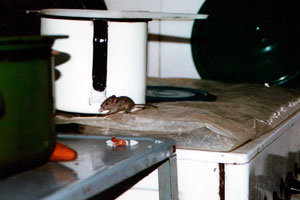
Mice will hide in any nook and cranny in your kitchen.
Here are some of the more popular places that you may find them hiding:
- Under your kitchen island.
- In your cabinets and pantry.
- In drawers.
- In your oven.
- In your walls.
- In the garbage can.
- In the cupboard.
- Behind and under the refrigerator.
If you’ve inspected your kitchen and found mice, you’re most likely very eager to get rid of these disease-carrying vectors from your home once and for all. How can you do it quickly, safely, and effectively?
You have several choices on how to get rid of mice from your kitchen.
Here are some of the best ways to do it:
-
Killing Traps: There are several types of traps available that will kill mice on contact. For more information on the best bait for your traps, click here.
Mice avoid human odors, so wear gloves when setting traps. - Humane Traps:
Some people don’t feel right killing mice. If you are one of those people, rest assured that you have many choices on humane traps to choose from. These traps will capture the mouse and keep it alive so you can take them outside and set them free.
- Poisons: Poisons aren’t always recommended because mice will eat the poison and then run off to die, requiring you to hunt down the stench of a decaying mouse. Click here to learn more on how to get rid of mouse smell.
- Deterrents:
You can choose from several mouse deterrents in your kitchen. For more information on ultrasound device to get rid of mice, click here. These are clean and humane ways to keep mice out of your home.
- Cats: Cats are natural predators to mice, plus they make wonderful companions. To learn more about the best cat for mice hunting click here.
Gross! You Found Mouse Poop: Now What?
Mouse feces are teeming with disease-causing bacteria, and it’s a disturbing thought that you may have encountered it in a place where you prepare food for yourself and your family.
Hantavirus is a rare but very serious disease that can be contracted from mouse feces. When a mouse’s droppings dry out, the virus becomes airborne, allowing people to breathe it in and become infected.
Symptoms manifest within 1-5 weeks after exposure. There is no known treatment for this disease, and half of the people who catch it will die.
The early symptoms of hantavirus mimic the flu, but the lungs quickly fill with fluid, drowning the victim.
Other symptoms include:
- Fever,
- Muscle Aches (in the thighs, shoulders, hips, and back),
- Fatigue,
- Nausea,
- Abdominal Pain,
- Diarrhea,
- Chills,
- Dizziness.
More uncommon symptoms include:
- Earache,
- Sore Throat,
- Rash,
- Runny Nose.
Late stage symptoms are:
- Tightness in Chest,
- Shortness of Breath,
- Coughing.
Finding Mouse Droppings under Your Sink: What to Do Next?
If you encounter mouse droppings underneath the sink in your kitchen, take care to completely eradicate all signs of it to keep yourself and your family safe.
Follow these steps to thoroughly clean your kitchen of all signs of mouse droppings:
- Air out the room by opening all the doors and windows for at least a half hour before tackling the mess.
-
Put on proper safety equipment, such as heavy-duty gloves and a P100 respirator.
Do not sweep or vacuum up mouse droppings. This will cause more of the dangerous particulates to fly into the air, putting you at high risk of inhaling them and contracting hantavirus. Always use strict safety precautions when cleaning a contaminated site to avoid illness. - Spray down all the contaminated surfaces with powerful disinfectant, like bleach diluted in 1:10 ratio.
- Scrub down all surfaces with sponges and towels.
- Throw all contaminated cleaning supplies away in puncture-proof garbage bags.
- After removing all infected materials from your home, throw your clothing in the wash and hop into the shower.
For a more comprehensive guide to cleaning up mouse droppings, click here.
Clever Solutions to Your Mouse-in-Kitchen Problems
While there are several reliable, conventional ways to get rid of mice from your kitchen, you may want to try some of these more unusual, quirky ways to evict those unwanted rodents. Click here for more tried and true ways on how to scare mice away.
- Onions:
Mice hate the smell of onions. They’ll avoid them like, well, the plague. Set some onions out on your counter (up high and away from pets) and this natural mouse deterrent will do its work. Check on it fairly often and be sure to throw it out and replace it when starts to grow moldy.
- Cat Litter:
If you sprinkle used cat litter around your kitchen, mice will stay away. They know the smell of their natural predators and will avoid your home. Then again, you could just get a cat!
- Instant Mashed Potatoes:
This one is a little bit morbid, but it definitely works. Set some instant mashed potatoes out where a mouse can find it. The dry potato flakes will expand in the mouse’s stomach, rupturing its intestines, killing it instantly. Be sure to keep this away from your children and pets.
- Cocoa Powder Mixed with Plaster: This one is also a little unusual, but mix plaster with cocoa powder and set it somewhere up high where a mouse can get to it. It will harden in their stomachs, killing them.
- Aluminum Foil:
Mice don’t want to have anything to do with aluminum foil. Place it where mice tend to congregate to dissuade them from sticking around any longer.
Catching a Mouse
If you have mice in your kitchen, don’t give up hope. It’s very easy to capture these filthy rodents using a variety of traps.
Here are some of the more common traps used to catch mice:
Be sure to set the traps with the right kind of bait to make sure you actually lure them in properly. If you’re wondering do mice like peanut butter and if it would make good bait for your traps, click here.
The Best Way to Kill Mice
The great philosopher Ralph Waldo Emerson once said, “Build a better mousetrap, and the world will beat a path to your door.” But what makes one mouse trap superior to another?
Perhaps an electronic mouse trap would effectively eliminate your rodent problems, but if you have a huge infestation, the cost of electronic ones will add up quickly. It may be more economical to stock up on snap traps.
Wooden Traps
Wooden mouse traps are standard and sold at almost all hardware, garden, and drug stores, making them easy to find for homeowners. Sometimes the directions leave a little to be desired though. Often sold under different names and brands, wooden mouse traps are cost-effective and one of the best mouse traps you have available.
Follow these steps for setting a standard wooden mouse trap:
- Open the packaging and free the arm bar from the base of the mouse trap. You may need to use pliers or a screwdriver if a staple is used instead of a removable clip.
- Position the arm bar so it is hanging off the back of the trap. Keep it securely in place with one hand.
- Place the bait on the bait pedal, which is usually metal or a colored plastic. It is located on the top portion of the trap on most models.
- Bait the trap with something like peanut butter to lure the mice. Peanut butter works well because mice can’t quickly grab it and run away from the trap without the kill bar coming down.
- Position the kill bar securely against the wood frame. Secure the arm bar under the notch in the bait pedal area and quickly move your fingers away from the trap.
- Position the trap along the wall or in an area where you have seen mice.
What if the convenience of poison appeals to you to get rid of mice, but you can’t be bothered to find the mice after they’re dead? Then maybe a glue trap is a better fit for your goals.
The best way to kill mice, therefore, is the way that gets rid of them the first time so you don’t have to worry about them anymore in the future.
You’ve been through a roller-coaster of emotions. It started with anger and revulsion when you first spied evidence of a mouse in your kitchen. It got scary quickly when you found out how deadly hantavirus can be. And now you feel relief – you have that deep, satisfying calm that comes from knowing you have the tools, the power, and the knowledge to get rid of the mouse infestation that was filling you with fear and dread.

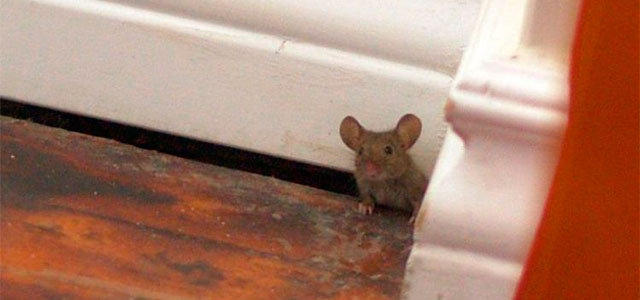
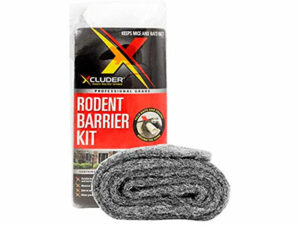
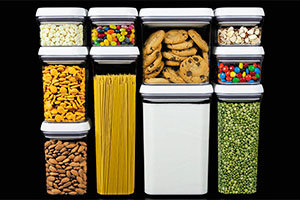 Having boxes and bags of food and bread out is like rolling out a welcome mat for mice. Transfer all of your grains and cereals to air-tight jars that the mice can’t chew through. Keep your fruit in the fridge, or store it in a mesh container that mice can’t get into.
Having boxes and bags of food and bread out is like rolling out a welcome mat for mice. Transfer all of your grains and cereals to air-tight jars that the mice can’t chew through. Keep your fruit in the fridge, or store it in a mesh container that mice can’t get into. Now is a good time to go through your kitchen to see where the mice have set up camp. Throw away their nests and sanitize the area to prevent them from coming back. You will also need to set up traps to catch the mice that have already moved in. Click here for more information on the
Now is a good time to go through your kitchen to see where the mice have set up camp. Throw away their nests and sanitize the area to prevent them from coming back. You will also need to set up traps to catch the mice that have already moved in. Click here for more information on the  Some people don’t feel right killing mice. If you are one of those people, rest assured that you have
Some people don’t feel right killing mice. If you are one of those people, rest assured that you have 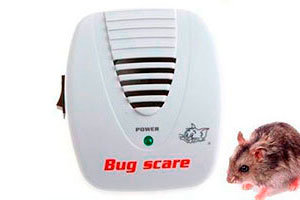 You can choose from several mouse deterrents in your kitchen. For more information on
You can choose from several mouse deterrents in your kitchen. For more information on 
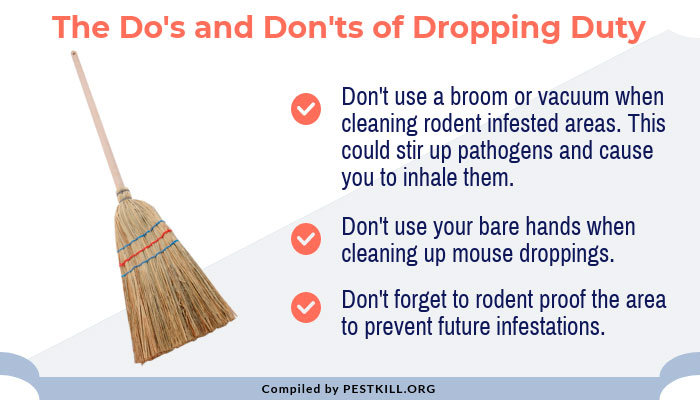
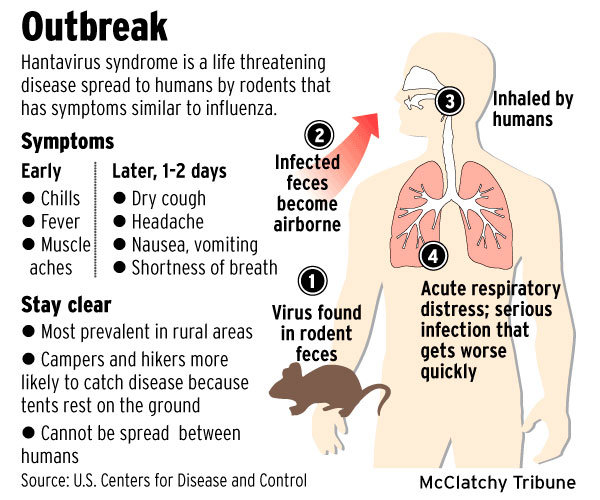
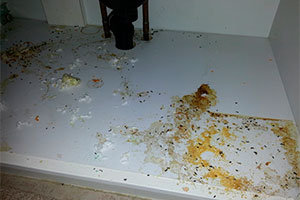
 Mice hate the smell of onions. They’ll avoid them like, well, the plague. Set some onions out on your counter (up high and away from pets) and this natural mouse deterrent will do its work. Check on it fairly often and be sure to throw it out and replace it when starts to grow moldy.
Mice hate the smell of onions. They’ll avoid them like, well, the plague. Set some onions out on your counter (up high and away from pets) and this natural mouse deterrent will do its work. Check on it fairly often and be sure to throw it out and replace it when starts to grow moldy.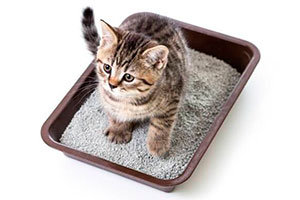 If you sprinkle used cat litter around your kitchen, mice will stay away. They know the smell of their natural predators and will avoid your home. Then again, you could just get a cat!
If you sprinkle used cat litter around your kitchen, mice will stay away. They know the smell of their natural predators and will avoid your home. Then again, you could just get a cat! This one is a little bit morbid, but it definitely works. Set some instant mashed potatoes out where a mouse can find it. The dry potato flakes will expand in the mouse’s stomach, rupturing its intestines, killing it instantly. Be sure to keep this away from your children and pets.
This one is a little bit morbid, but it definitely works. Set some instant mashed potatoes out where a mouse can find it. The dry potato flakes will expand in the mouse’s stomach, rupturing its intestines, killing it instantly. Be sure to keep this away from your children and pets.
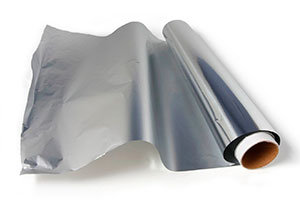 Mice don’t want to have anything to do with aluminum foil. Place it where mice tend to congregate to dissuade them from sticking around any longer.
Mice don’t want to have anything to do with aluminum foil. Place it where mice tend to congregate to dissuade them from sticking around any longer.